Fuel quality has always played a critical role in how efficiently vehicles run, how long engines last, and how much drivers spend at the pump. In recent years, one particular blend has become a hot topic worldwide: petrol 10 ethanol (E10). This fuel mix, made up of 90% traditional petrol and 10% ethanol, is promoted as a cleaner, more eco-friendly option compared to standard petrol.
But is it really the right choice for your car? To answer this, we’ll explore the benefits and drawbacks of petrol 10 ethanol, compare it with ethanol free petrol and non ethanol petrol, and look at how ethanol petrol price affects consumer decisions. We’ll also briefly discuss why some drivers try to remove ethanol from petrol, and whether that’s actually worth the risk.
What Is Petrol 10 Ethanol?
Petrol 10 ethanol, often called E10 fuel, is a blend of 90% petrol and 10% ethanol. Ethanol itself is a renewable biofuel made from crops like sugarcane, corn, or other plant-based materials. Governments around the world encourage the use of ethanol blends because they reduce reliance on pure fossil fuels and help cut down greenhouse gas emissions.
This shift is not just about the environment. Ethanol is often cheaper to produce than petrol, which is why ethanol petrol price tends to be lower than that of non ethanol petrol. However, cheaper doesn’t always mean better for every vehicle.
1. Lower Fuel Cost
The biggest advantage of petrol 10 ethanol is affordability. Thanks to government subsidies and renewable fuel policies, it usually costs less than ethanol free petrol. For daily drivers who want to save money on every refill, this is a big plus.
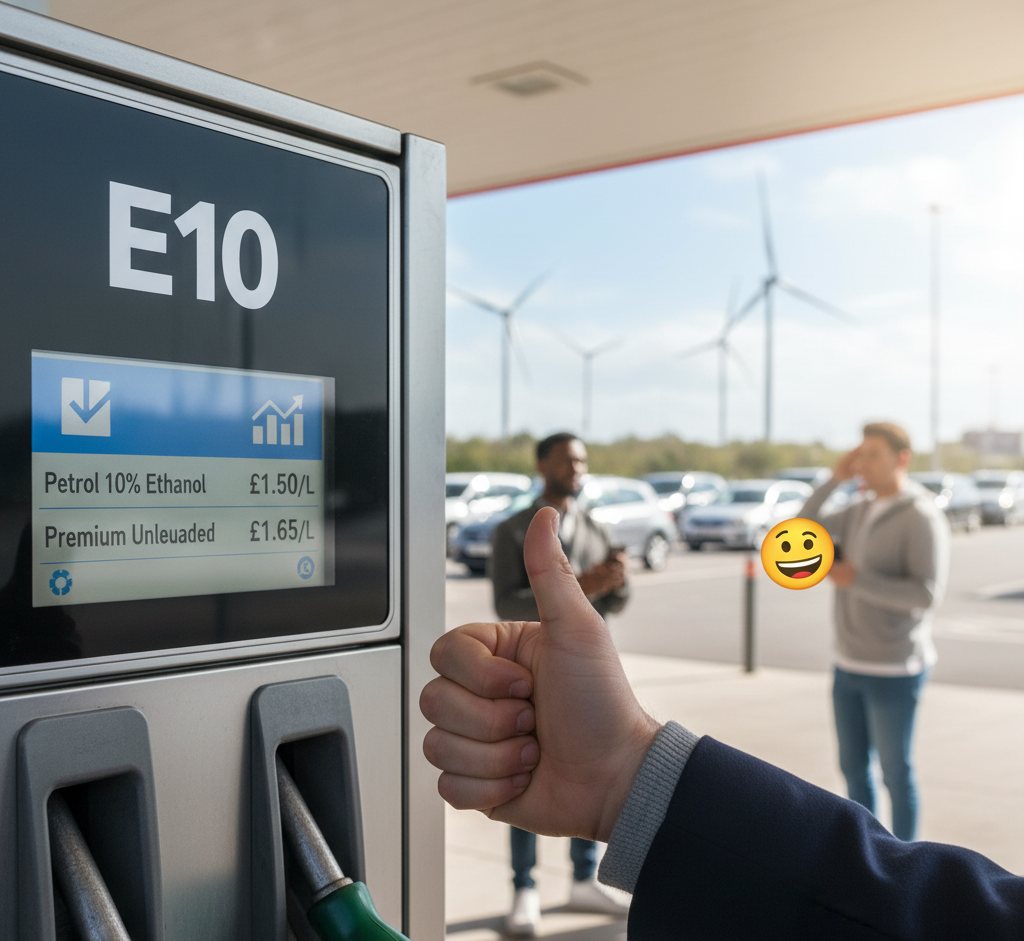
2. Environmentally Friendly
Ethanol burns cleaner than pure petrol, which means lower carbon emissions. This helps reduce the overall carbon footprint of vehicles, making E10 a more sustainable option. For eco-conscious drivers, this can be an important deciding factor.
3. Widely Available
In many countries, especially in Europe and North America, E10 is the standard petrol type at most gas stations. Its easy availability makes it the convenient choice compared to non ethanol petrol, which is harder to find..
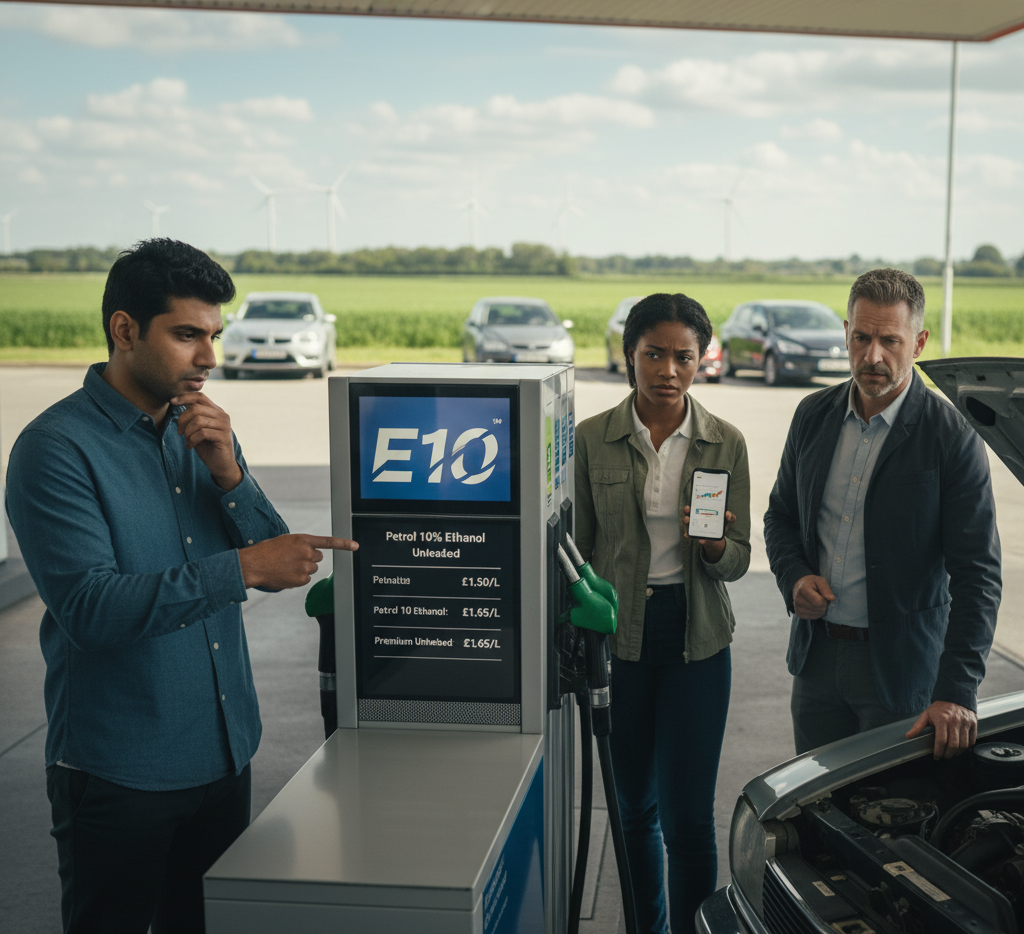
Drawbacks of Petrol 10 Ethanol
1. Reduced Fuel Efficiency
Ethanol contains less energy per liter compared to pure petrol. That means cars running on petrol 10 ethanol often get slightly lower mileage compared to those using ethanol free petrol. Over time, this can mean more trips to the pump.
2. Moisture and Corrosion Issues
Ethanol is hygroscopic, meaning it attracts water. This can lead to moisture buildup in the fuel system, potentially causing corrosion or blockages. While modern cars are designed to minimize this problem, it can still be an issue for older vehicles.
3. Unsuitable for Classic Cars and Small Engines
Older vehicles, motorcycles, boats, and machines like lawnmowers often run better on non ethanol petrol. That’s because ethanol blends can damage seals, hoses, and carburetors that weren’t designed to handle it..
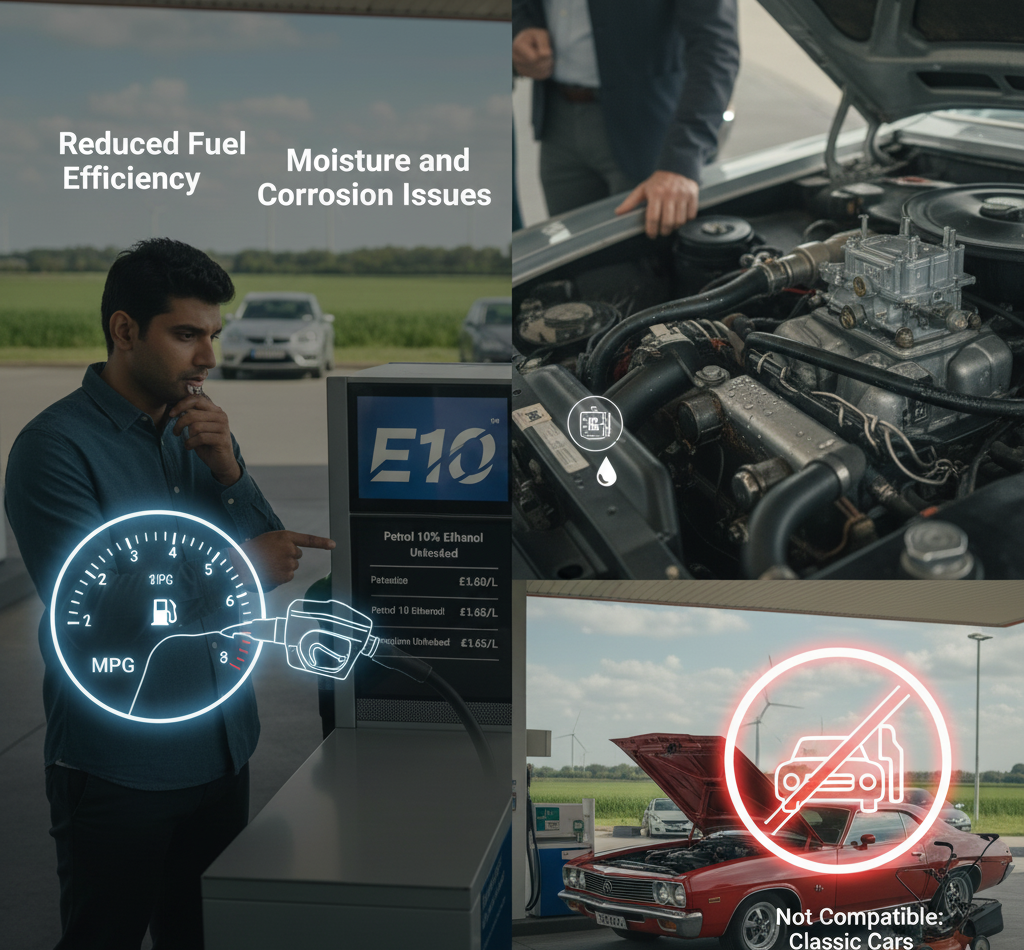
Ethanol Free Petrol vs. Petrol 10 Ethanol
To decide whether petrol 10 ethanol is right for your car, it helps to compare it with its main alternative: ethanol free petrol (or non ethanol petrol).
- Ethanol Free Petrol: Offers better fuel efficiency, stable storage, and long-term engine protection. However, it usually comes with a higher price tag and is harder to find.
- Petrol 10 Ethanol: Cheaper, more eco-friendly, and widely available, but slightly less efficient and not ideal for older or specialized engines.
The choice largely depends on your vehicle type and driving habits.
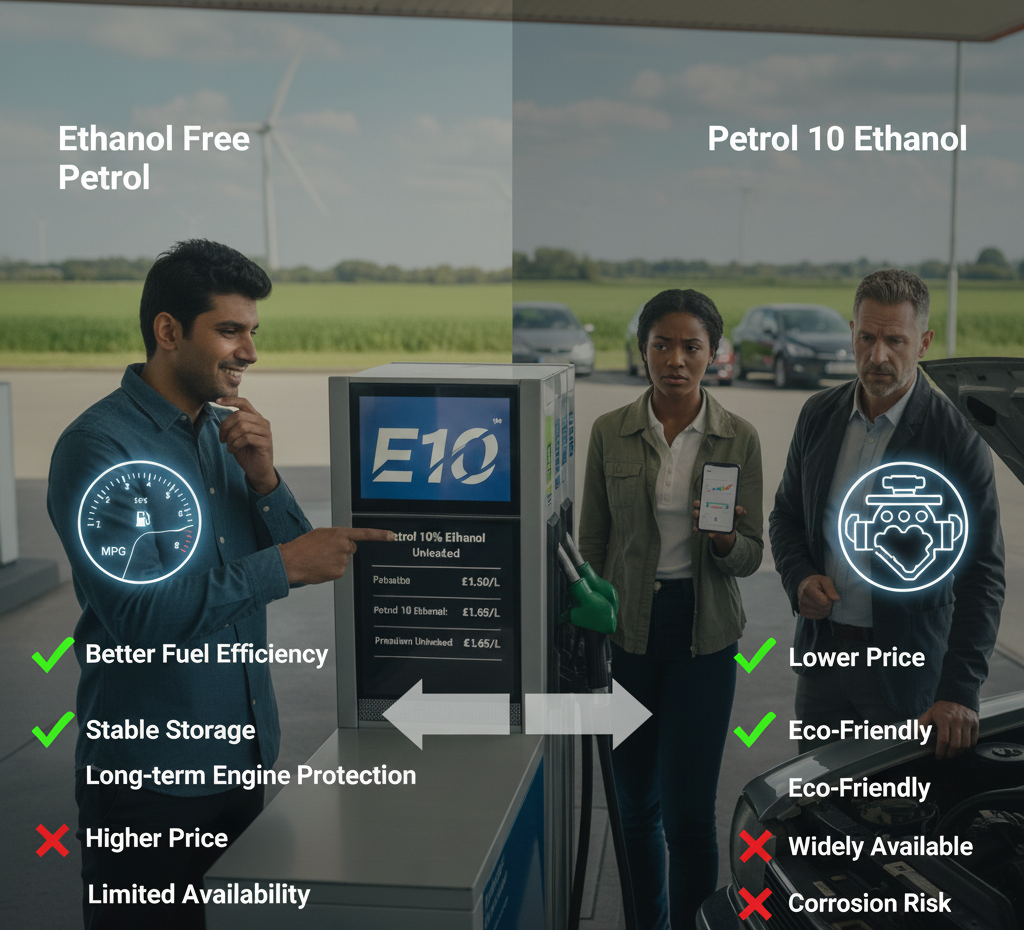
Is Petrol 10 Ethanol Right for You?
Whether petrol 10 ethanol is the right choice depends on your vehicle and how you use it.
- Choose E10 if:
- You drive a modern car (2000s or newer).
- You want a cost-effective, eco-friendly option.
- You refuel regularly and don’t store fuel for long periods.
- You drive a modern car (2000s or newer).
- Choose Ethanol Free Petrol if:
- You own a classic car, motorcycle, or boat.
- You need fuel that stores well for months.
- You prioritize fuel efficiency and engine longevity over price.
- You own a classic car, motorcycle, or boat.
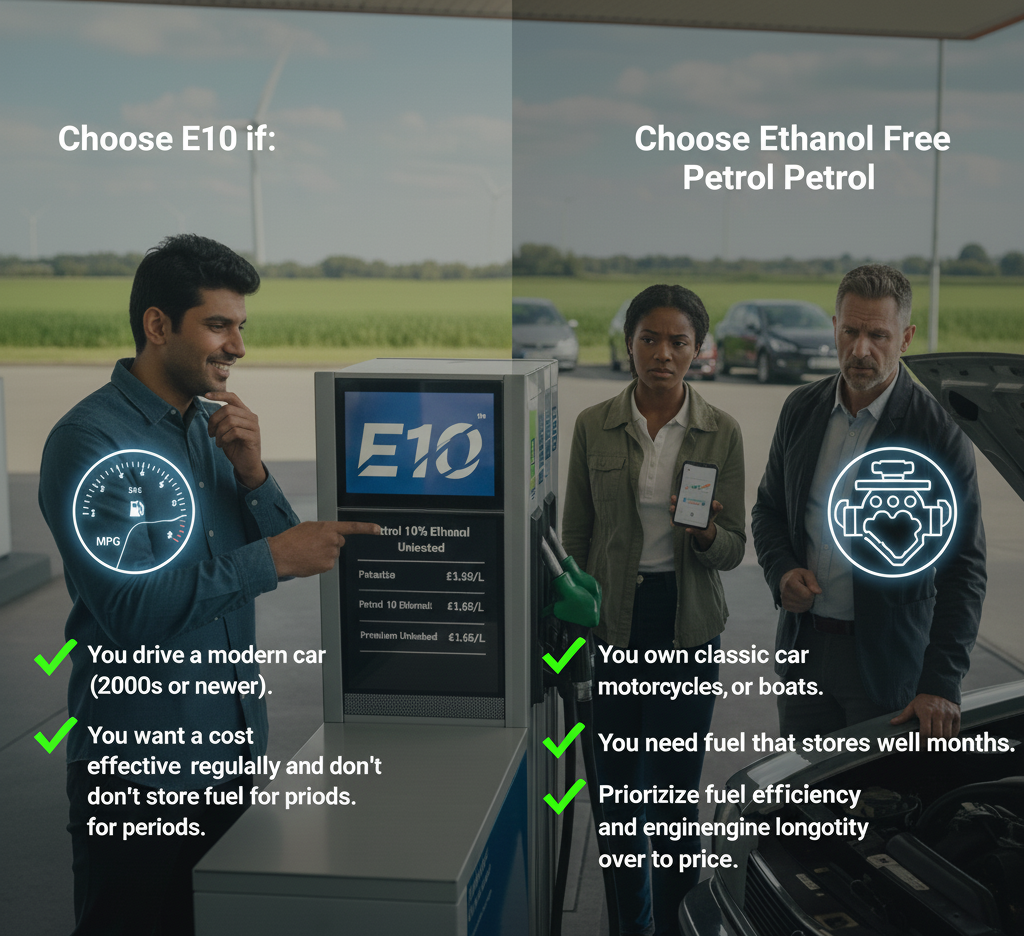
The Future of Ethanol Blends
With global attention on sustainability, blends like petrol 10 ethanol and even higher mixes (E15, E85) will likely expand. Governments are pushing renewable fuels, which means E10 will remain common for everyday drivers.
At the same time, demand for non ethanol petrol will continue among enthusiasts, boaters, and those who prioritize performance. Meanwhile, the rise of electric vehicles could gradually reduce dependence on both ethanol blends and pure petrol in the future.
Conclusion
Petrol 10 ethanol is a practical, cost-effective choice for most modern drivers, offering lower prices and reduced emissions. However, it does come with drawbacks like reduced efficiency and unsuitability for older engines. On the other hand, ethanol free petrol and non ethanol petrol deliver better performance and stability but cost more and are harder to find.
While some people experiment with ways to remove ethanol from petrol, it’s not safe or recommended. Instead, the smarter choice is to select the fuel that aligns with your car’s needs and your driving habits.
Ultimately, the right decision comes down to balancing price, performance, and long-term goals. And at nexgenwheels, we believe that understanding these trade-offs ensures you get the most out of your vehicle, no matter which fuel you choose.

